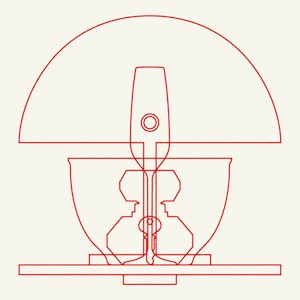CFCF Music for Objects EP
Music for Objects, the new EP from Montreal producer CFCF (a.k.a. Michael Silver) is a […]

Music for Objects, the new EP from Montreal producer CFCF (a.k.a. Michael Silver) is a collection of varied compositions whose pro forma presentation supports its title. According to the producer, the album can be seen as a sequel to last year’s captivating piano and synth EP, Exercises, which partially served as an entreaty to the contemporary classical-music world. Taking influence from composer Laurent Petitgand’s soundtrack to Wim Wenders’ Notebook on Cities and Clothes, a documentary about Japanese fashion designer Yohji Yamamoto, Silver set out to make an album that expressed the innate “sound” of inanimate objects. (To wit: tracks included on Music for Objects have names like “Perfume,” “Bowl,” and “Key.”) Amazingly, Silver has not only largely succeeded at his goal, but he’s also done so without making an album that’s too stuffy or cerebral to actually enjoy.
When Exercises was released, it marked a turn away from Silver’s more pop-oriented work, instead embracing influences ranging from Philip Glass and David Borden to Yellow Magic Orchestra’s Ryuichi Sakamoto. Music for Objects continues that evolution, and with its high-concept presentation and limited pallet, the record elaborates on Exercises‘ ideas. At face value, Silver’s goal for Music for Objects may sound excessively philosophical—as if the release would be better suited to museums than living rooms. As it turns out, though, the visual focus allows CFCF to make his own in-jokes (as with “Glass”) and creatively reinterpret his source material. Compared to Excercises, Music for Objects is looser, more experimental, and more overtly enjoyable.
Opener “Glass” is a piano-driven track that adds layers of undulating synth and marimba. The title could even be seen as a winking reference to Silver’s hero—after all, Philip Glass employs marimba better than just about anyone around. The centrifugal arrangement of “Bowl” brings to mind the shape of its source material, while the ethereal but brief “Perfume” uses bells and pentatonics to beautiful effect. “Camera,” on the other hand, is a drippy, sax-driven affair that returns to the bottom-of-the-codeine-bottle moods of CFCF’s chopped-and-screwed Night Bus mixtapes from 2010 and 2011. “Keys,” one of the best songs on the album, is built around an upbeat groove and arpeggiated synths that are actually danceable; the track could fare well in a deep-house DJ set.
While Silver has always talked freely about this influences, the artist that comes closest to mind when hearing the EP—even more so than Glass—is Brian Eno. Like CFCF, Eno was interested in the idea of soundtracking the physical world, and, as anyone who has listened to Music for Airports in an actual airport knows, the results were enchanting. Yet even though Eno may have composed with a particular space in mind, his tracks have always stood on their own. Music for Objects has the same appeal. While it’s fun knowing what a song is about, it’s unnecessary to envision the platonic ideal of a turnstile to enjoy the album track of the same name.
In the end, the tile of Music for Objects is best seen as a jumping-off point. Sure, it can be viewed as a concept album, ascetic exercise, or a scholarly pursuit, but among its tracks is some of Michael Silver’s most intriguing work to date. The album may be architectural in its deliberateness, but it’s not overly academic; during its best moments, Music for Objects could even be described as fun.

